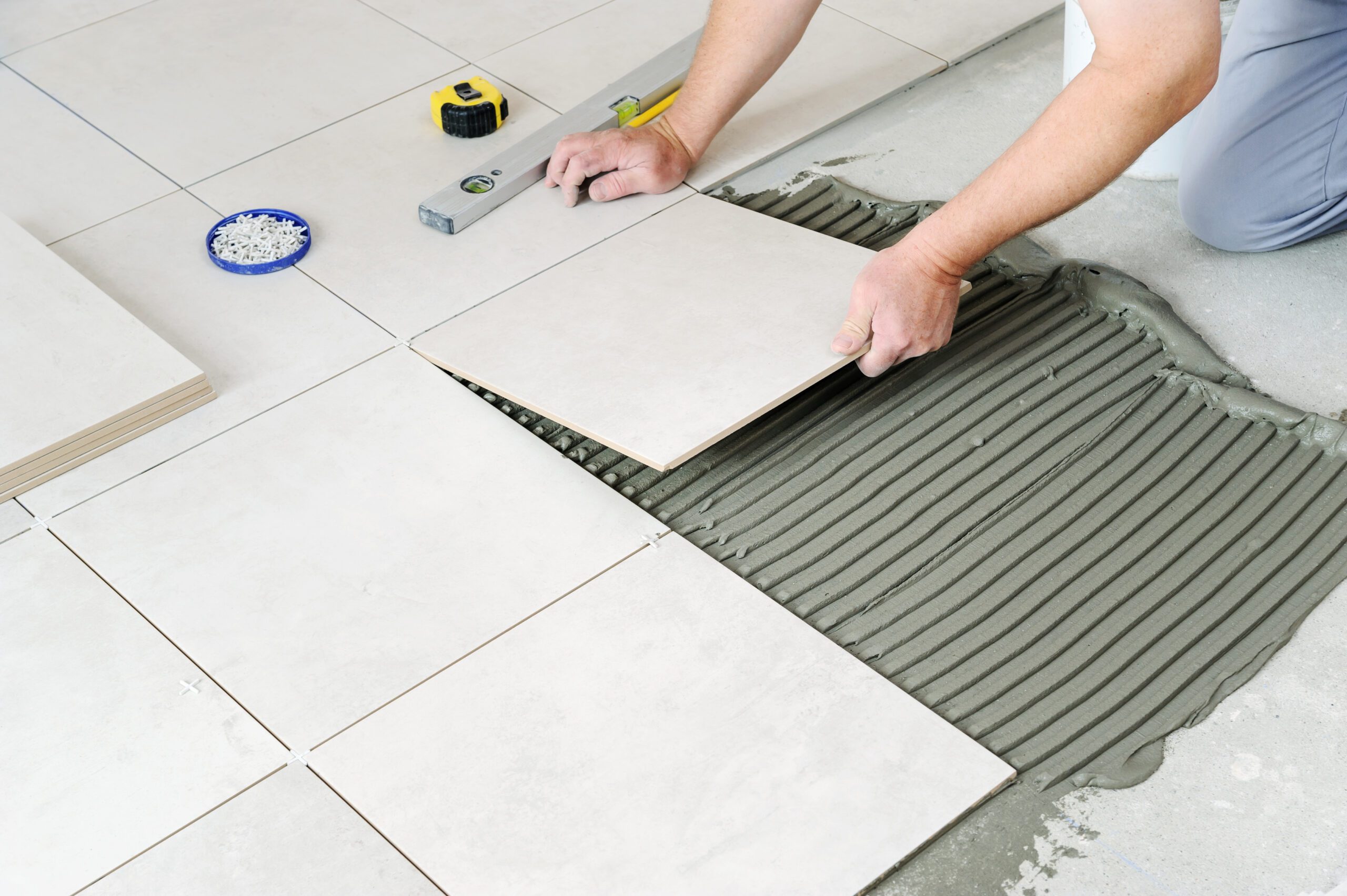Introduction:
I’ve installed tile in nearly all of the 9 homes we’ve owned, and I can assure you that doing it right requires time and attention to detail. From choosing the right adhesive, to properly setting the tiles, each step is important to do properly to ensure a great job. One of the most important steps in the process is allowing sufficient time for the adhesive to set. Walking on tile too soon after installation is a very common issue that can ruin a time-consuming job. This waiting period can be frustrating, especially when you’re eager to use the newly tiled space. However, walking on tile too soon can cause a multitude of issues that may compromise the integrity and appearance of your flooring.
The Importance of Adhesive Setting Time
The adhesive setting time in tile installation is fundamental to achieving a strong and durable bond between the tiles and the substrate. When tile adhesive is applied, it undergoes a process of curing, which entails the chemical hardening and setting of the adhesive. The curing process solidifies the adhesive, creating a bond that holds the tiles firmly in place.
There are several technical aspects to consider when understanding the importance of adhesive setting time:
Chemical Bonding: Tile adhesives typically consist of a combination of cement, water, and polymers that work together to create a strong chemical bond between the tiles and the substrate. As the adhesive dries, the water in the mixture begins to evaporate, allowing the cement particles to come closer together and form strong bonds. The polymers in the adhesive enhance its flexibility and adhesion properties.
Shear Strength: Properly set adhesive provides high shear strength, which is the ability of the adhesive to resist forces that try to slide or displace the tiles. Insufficient setting time can result in low shear strength, making the tiles more susceptible to shifting or displacement when subjected to external forces, such as foot traffic.
Compressive Strength: Adhesive setting time is essential for achieving high compressive strength, which is the ability of the adhesive to withstand compressive forces, such as the weight of furniture or appliances. Properly set adhesive provides a strong and stable foundation for the tiles, allowing them to bear heavy loads without cracking or breaking.
Tensile Strength: Tensile strength refers to the adhesive’s ability to resist tension or pulling forces. Proper adhesive setting time ensures that the adhesive can withstand tensile forces, such as those exerted by temperature fluctuations, without causing the tiles to lift or separate from the substrate.
Cohesive Failure Prevention: Cohesive failure occurs when the adhesive itself breaks apart, leaving fragments of adhesive on both the tile and the substrate. Allowing sufficient setting time reduces the risk of cohesive failure by ensuring that the adhesive has reached its maximum strength before being subjected to any external forces.
Adhesive Thickness: The thickness of the adhesive layer plays a role in the setting time. Thicker adhesive layers require more time to set, as the water in the adhesive takes longer to evaporate. Factors such as tile size, substrate type, and environmental conditions can influence the appropriate adhesive thickness.
Environmental Factors: Temperature and humidity levels can impact the adhesive setting time. Higher temperatures and low humidity levels can accelerate the curing process, while cooler temperatures and high humidity levels can slow it down. It is essential to consider the installation site’s environmental conditions when determining the appropriate waiting time before walking on the tiles.
Dislodgement of Tiles
The most obvious consequence of walking on tile too soon is the dislodgement of tiles. When the adhesive is not fully set, it hasn’t yet reached its maximum bonding strength. Walking on the tiles can shift them out of position, leading to an uneven floor with gaps and misaligned tiles. Dislodged tiles are not only aesthetically unpleasing but also pose a tripping hazard.
Grout Line Irregularities
Grout lines play a vital role in the overall appearance of a tiled floor. Walking on tiles before the adhesive has fully set can cause grout lines to become irregular, affecting the uniformity of the floor. Irregular grout lines are not only visually unappealing but can also make it difficult to apply grout later, leading to an unstable and less durable installation.
The picture shown here is in our bathroom. We didn’t step on it too soon, however, I speculate that the installer did while assembling the shower walls. It’s a frustrating thing to look at every day. However, it did create a future project for Trustworthy Home Advice.

Weakening of Tile Adhesive
Walking on tiles while the adhesive is still wet can lead to the adhesive being spread unevenly, creating weak spots where tiles may not be properly bonded. This can result in tiles becoming loose over time, requiring costly repairs or replacement.
Cracking and Chipping of Tiles
As tiles are shifted out of position by walking on them too soon, they may come into contact with each other, causing cracking or chipping. Damaged tiles can ruin the aesthetics of your floor and may need to be replaced, increasing the overall cost and time required for the installation.

How Long Should You Wait Before Walking on Tile?
The waiting time before walking on tile varies depending on the type of adhesive used, the substrate, and the environmental conditions. Generally, it’s recommended to wait at least 24 hours before walking on newly installed tiles. However, it’s important to follow the manufacturer’s recommendations for the specific adhesive you’re using. Some fast-setting adhesives may allow for walking on the tiles in as little as a few hours, while others may require a longer waiting period. However, even if the adhesive says you can walk on it in a few hours, I’d still wait a day before doing so.
Recommended Timeline for Tile Installation
- Day 1: Apply adhesive and set tiles.
- Day 2: Wait for the adhesive to set (24 hours recommended).
- Day 3: Apply grout to grout lines.
- Day 4: Wait for the grout to set and clean the tiled surface.
It’s essential to note that this timeline may vary depending on the specific products used and the conditions of the installation site.
Conclusion
Proper tile installation requires patience and attention to detail. Walking on the tile too soon can lead to a range of issues, including dislodgement of tiles, grout line irregularities, weakening of tile adhesive, and cracking and chipping of tiles. It’s essential to wait for the adhesive to set before walking on the tiles, as recommended by the adhesive manufacturer. By following the appropriate timeline for tile installation, you can ensure a beautiful, durable, and long-lasting tiled surface.
If you have a question or a message for us, enter it here
Otherwise you can post a public comment below – Thanks for visiting




